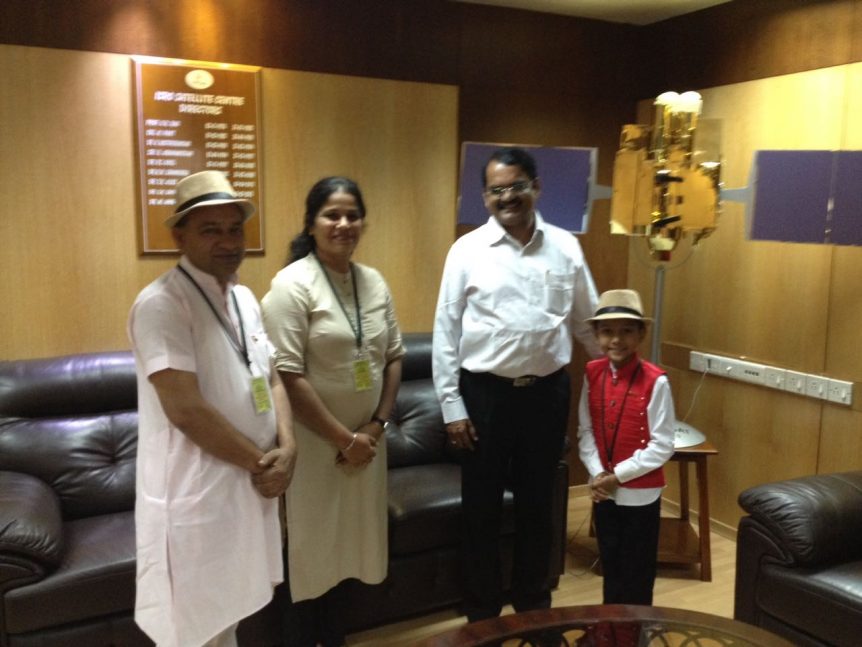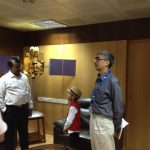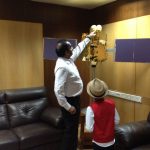Google Boy Kautilya Pandit who now flashes the badge of a Goenkan, Having expressed his keen interest in becoming an Astro scientist, recently visited Indian Space Research Organization, Bengaluru. ISRO is functioning under the aegis of Department of space, Government of India & is the apex body for providing direction of our space programme in terms of scientific and administrative functioning. It is overall responsible for execution, planning and management of space related technology and applications.
Kautilya went around the centre and watched not only the satellites being assembled, but also interacted with the Director of the Centre and leading space scientist Dr. M. Annadurai.
He also went through the museum watching exhibits like the solid propellant, a model of the first Indian communications satellite Apple before viewing important satellites like Chandrayaan-2 and SRE 2 (Space Capsule Recovery Experiment 2) that were under construction at the facility.
“It was good learning experience to see the chart of historical achievements of aerospace technology,” he said.
During his centre round he also saw the Clean Rooms, where satellites are assembled, the Thermowatt chamber, where satellites are checked before being sent to Sriharikota in Andhra Pradesh.
A group of scientists at IRSO also discussed and showed India’s first satellite, Aryabhata, which was launched by the Soviet Union on 19 April 1975 & in 2008, ISRO sent one lunar orbiter, Chandrayaan-1, into the orbit and in 2014 launched a Mars Orbiter Mangalyaan which successfully entered Mars orbit. This made India the first nation to succeed on its first attempt, and ISRO the fourth space agency in the world as well as the first space agency in Asia to successfully reach Mars orbit. This is one of the major ISRO achievement. In 1983, INSAT (Indian National Satellite System) is the largest domestic communication system in the Asia-Pacific Region which is a series of multipurpose geostationary satellites launched by ISRO to satisfy the telecommunications, broadcasting, meteorology and search-and-rescue needs of India.
Not only this they also shared that India is planning its second visit to the moon with Chandrayaan-2 which will possibly land on the lunar surface India’s own rover; a satellite to study the Sun, called Aditya is being built and ISRO is already eyeing a visit to a passing asteroid.

















